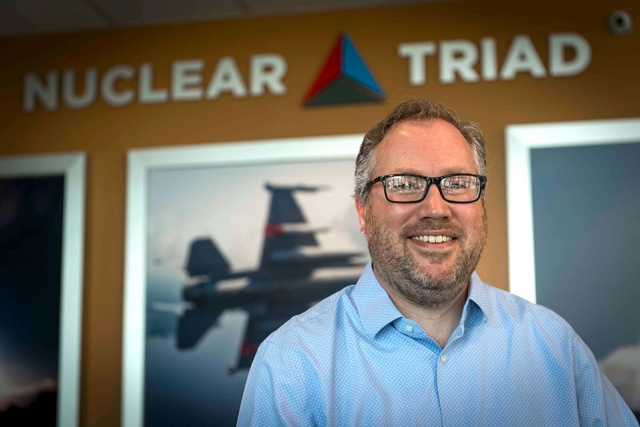Reframing problems with systems engineering thinking
 “From conception to planning to execution to maintenance to decommissioning of a system or product, systems engineering helps keep track of all the moving pieces,” said Y-12’s Mike Sand, who recently earned his master’s degree in the systems engineering development program jointly sponsored by Consolidated Nuclear Security and the University of Tennessee.
“From conception to planning to execution to maintenance to decommissioning of a system or product, systems engineering helps keep track of all the moving pieces,” said Y-12’s Mike Sand, who recently earned his master’s degree in the systems engineering development program jointly sponsored by Consolidated Nuclear Security and the University of Tennessee.
Like many workers today, Mike Sand was asked to do more with less. In his 15 years as a chemist at the Y-12 National Security Complex, he saw the classical chemistry lab staff shrink by more than half, his workload grow, and aging instrumentation increasingly break down. He knew there had to be a better way. That’s when opportunity knocked.
In 2016, Sand joined more than a dozen other Y-12 employees in pursuing a University of Tennessee master’s degree in industrial engineering with a concentration in systems.
“I wanted to improve how things functioned in the lab,” Sand said. “This program was an opportunity to think critically, problem-solve, consider work flow, and learn how to optimize tasks, time and processes. I jumped at the opportunity.”
The two-year program centers on teaching the big-picture approach to a system and how to integrate customer requirements and all the technical details from start to finish. Jointly sponsored by UT and Consolidated Nuclear Security, the contractor that operates Y-12 in Tennessee and Pantex in Texas for the National Nuclear Security Administration, the courses bolster systems engineering practices and practitioners at both federal sites.
“At CNS, we’re focusing on four fundamental uses of systems engineering: in weapons, infrastructure upgrades, wholly new systems, and technology transition,” said Y-12’s Mark Cook, senior director of Systems Engineering & Architecture. “Our approach to all four is the same. We consider not only the subject system but also all the interconnected systems, dependencies and everyone who has to work with it throughout the life cycle.”
The UT/CNS program also serves to further develop employee skills to better match organization needs. “The underlying principle of this program is transferrable learning,” said Dr. Rupy Sawhney, executive director of UT’s Center for Advanced Systems Research and Education.
UT and CNS customized the master’s program to ensure maximum benefit to Y-12, Pantex and students alike. UT professors and Y-12 personnel teach courses in Oak Ridge and Amarillo, and the program has invested in audiovisual equipment for distance learning. UT teaching assistants help students after classes and even on weekends. Students design their capstone projects around a Y-12 or Pantex project that correlates to an NNSA mission need.
“This has never been about teaching a course,” Sawhney said. “It’s about building up the workforce. Our partnership with CNS through this program is preparing the workforce to meet NNSA mission needs today and the challenges of tomorrow.”
Cook agrees. “The program is proving successful in helping CNS meet our needs with its customization, focus and support from the university,” he said. “It seems like a natural fit to see if this model can help with workforce development for others in the Nuclear Security Enterprise.”
To achieve his master’s, Sand attended classes once a week on his own time while continuing to work at Y-12. In addition to completing 33 credit hours, he performed a capstone project aimed at increasing the chemistry lab’s functionality, reliability, turnaround times and productivity.
“In the classical chemistry lab, I acted as a catalyst for change,” Sand said. “Through the coursework, I started a conversation on improving methodology, proving-in new technology and pursuing experimental work.”
Since earning his master’s, he’s transitioned to a new job in Cook’s Systems Engineering group. “Getting the degree pushed me outside my comfort zone but allowed me to grow both professionally and personally,” he said. “After putting in so much effort, it was worth it for my two little girls to watch me walk across that stage in my cap and gown.
“I want them to understand the importance of education, having a thirst for knowledge and continuous learning, and the benefits of pushing yourself beyond complacency,” he said.
Since 2011, more than 50 Y-12 and Pantex employees have participated in the UT systems engineering graduate program.
